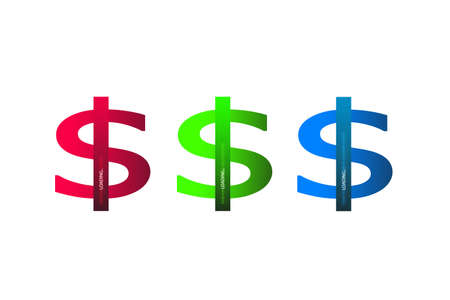Understanding Feng Shui: Ancient Wisdom Meets Modern American Homes
Feng Shui, an ancient Chinese practice, focuses on harmonizing individuals with their environment to attract positive energy—what we call “Qi” (pronounced “chee”). While it originated thousands of years ago in China, Feng Shui’s core principles can be adapted to fit any lifestyle or culture, including modern homes across the United States. Let’s explore how this old-world wisdom can enhance your home for greater wealth and success, right here in America.
What Is Feng Shui?
At its heart, Feng Shui is all about creating spaces that promote good health, happiness, and prosperity by balancing natural elements. It isn’t about superstition or magic; instead, it uses practical guidelines to make your home more comfortable and inviting. This can lead to real-life benefits—like improved focus, better relationships, and even increased financial luck.
Core Principles of Feng Shui
| Principle | Explanation | How It Fits U.S. Homes |
|---|---|---|
| Chi (Qi) Flow | The movement of energy throughout a space; should flow smoothly without blockages. | Arrange furniture so people can move easily; avoid cluttered entryways. |
| The Five Elements | Wood, Fire, Earth, Metal, Water—each element brings a unique energy. | Add plants (wood), candles (fire), stones (earth), metal decor (metal), or fountains (water) in key spots. |
| Yin & Yang Balance | A balance between calm (yin) and active (yang) energies for harmony. | Mix soft lighting with brighter areas; pair cozy rugs with sleek furniture. |
| The Bagua Map | An energy map used to divide your home into nine life areas. | Overlay the Bagua on your floor plan to identify zones for wealth, family, career, etc. |
Applying Feng Shui in Contemporary American Homes
You don’t need traditional Chinese décor to benefit from Feng Shui. In fact, it works best when you blend its guidelines with your personal style and the realities of American living—whether you have a suburban house in Texas or an apartment in New York City. Here are some practical ways to start:
- Front Door Focus: The main entrance is crucial for welcoming positive energy. Keep this area clean and well-lit—think fresh welcome mats and tidy porches.
- Declutter Regularly: Clutter blocks energy flow. Donate unused items and organize spaces like closets and garages.
- Create Comfort Zones: Use furniture placement to encourage conversation and relaxation. Arrange sofas so everyone has a good view of the door for a sense of security.
- Balance the Elements: Mix natural materials and colors throughout your home. You might add a wooden dining table (wood), metal kitchen appliances (metal), or blue accents in the bathroom (water).
Quick-Start Feng Shui Checklist for U.S. Homes
| Action Step | Why It Matters |
|---|---|
| Tidy up the entryway | Makes room for new opportunities and positive energy to enter. |
| Add greenery indoors | Lively plants boost growth and fresh air in any climate. |
| Avoid blocked walkways | Smooth traffic flow equals smooth energy flow—important for daily life! |
| Let in natural light | Bright spaces uplift mood and increase yang energy for motivation. |
| Personalize your wealth corner | This southeast part of your home benefits from symbols of abundance—a bowl of coins or healthy plants work well in American settings. |
With these practical tips rooted in centuries-old wisdom, you can start transforming your living space into a magnet for wealth and success—right here in the U.S., one simple step at a time!
2. Choosing the Right Location and Layout for Abundance
When it comes to creating a home environment that supports wealth and success, location and layout matter just as much in the U.S. as they do in traditional Feng Shui. The way you assess and arrange your floor plan, entrances, and main rooms can make a real difference in attracting positive energy, prosperity, and opportunities.
Assessing Your Home’s Floor Plan
Start by looking at your homes overall shape and flow. In American homes, open-concept layouts are common, which is great for energy circulation if arranged thoughtfully. Avoid cluttered or blocked pathways between rooms—energy (called “chi” in Feng Shui) should move smoothly throughout the space. If you notice tight hallways or awkward corners where energy might get stuck, consider adding plants, mirrors, or soft lighting to keep things moving.
Ideal vs. Challenging Floor Plan Features
| Ideal Feature | Why It Helps | Simple Fixes for Challenges |
|---|---|---|
| Open entryway with clear view inside | Welcomes opportunities and prosperity in | Add a mirror near entrance; remove shoes or clutter from entryway |
| Square or rectangular layout | Promotes balance and stability | Use rugs or furniture to “square off” odd corners |
| Main door not directly aligned with back door or large windows | Keeps wealth energy from rushing out too quickly | Place a plant or screen between doors/windows to slow energy flow |
The Importance of Entrances
Your front door is called the “mouth of chi” because its where energy enters your home. In the U.S., many houses have porches or mudrooms—keep these areas tidy and inviting. Make sure your house numbers are clearly visible, porch lights work, and there’s nothing blocking the path to your front door. A fresh welcome mat and seasonal décor can also help draw in positive energy.
Front Door Do’s and Don’ts
| Do’s | Don’ts |
|---|---|
| Keep the path to the door clear and well-lit Add a healthy potted plant on each side Use a working doorbell or knocker |
Avoid broken steps or peeling paint No trash bins near the entrance No overgrown bushes blocking the view |
Key Rooms for Wealth and Success
Certain rooms play a bigger role in influencing abundance:
The Living Room:
- This is often the heart of American homes. Arrange seating so that everyone can see the main entrance—this promotes a sense of control and readiness for new opportunities.
- Add touches of green (plants), gold accents, or water features like a small fountain to symbolize growth and wealth.
The Kitchen:
- The kitchen represents nourishment and resources. Keep countertops clean, fix any leaky faucets (to avoid “money draining away”), and display a bowl of fresh fruit for good fortune.
The Home Office:
- If you work from home, place your desk so you face the door but aren’t directly in line with it (“command position”). This setup helps you feel secure and empowered to handle business matters.
Setting the Stage for Success in Any Home Size or Style
No matter if you live in a city apartment, suburban ranch, or modern townhouse, you can adapt these Feng Shui principles to fit your lifestyle. Focus on clear pathways, a welcoming entrance, balanced room arrangements, and intentional décor choices. By making small adjustments to your home’s location and layout, you invite prosperity—and set yourself up for lasting success right here in America.

3. Harnessing the Power of the Wealth Corner (Southeast) in American Spaces
Finding Your Wealth Corner—No Matter Where You Live
In Feng Shui, the southeast corner of your home is known as the “Wealth Corner.” This area is believed to influence your financial prosperity and abundance. Whether you live in a suburban house, a city apartment, or share space with roommates, you can locate and enhance this powerful spot to attract greater wealth and success into your life.
How to Identify Your Wealth Corner
The simplest way to find your wealth corner is by standing at your main entrance and looking inside. The far left corner from where you enter is considered the wealth area in Western Feng Shui (using the Bagua map).
| Home Type | How to Find the Wealth Corner |
|---|---|
| Suburban House | Stand at your front door facing inside; the far left corner of the entire house is your wealth corner. |
| City Apartment | Use your apartment’s main entrance; the far left corner from the door is the money area. |
| Shared Space/Dorm | If you only have one room, use your bedroom’s entrance to determine the far left corner as your personal wealth zone. |
Practical Ways to Enhance Your Wealth Corner in U.S. Homes
- Add healthy green plants: Plants like pothos, jade, or lucky bamboo symbolize growth and are easy to care for in any American climate.
- Display symbols of abundance: Place a bowl of coins, a small water fountain, or a photo that represents success for you—like a dream vacation or new car—in this area.
- Use colors wisely: Decorate with touches of green, purple, or gold through pillows, artwork, or decorative objects. These colors are linked to prosperity in Feng Shui.
- Keep it clutter-free: An organized space allows positive energy (Chi) to flow freely. Regularly tidy up this corner—even if it’s just a shelf or desk area.
- Add soft lighting: Use a lamp or natural sunlight to brighten up this spot and uplift its energy.
American Lifestyle Tips for Every Space
- Small Apartments: If your southeast corner lands in an awkward spot (like a closet), hang a mirror or place a symbolic object on a nearby shelf instead.
- Open Floor Plans: Use rugs or furniture placement to visually define and enhance the southeast zone without major renovations.
- Family Homes: Involve everyone! Let kids pick out a plant or artwork for this area so the whole household supports good vibes together.
- Rental Spaces: Choose portable items (like plants and decor) that can move with you if needed—no need for permanent changes.
No matter where you live in America, making small changes in your home’s southeast area can help invite more wealth and opportunities into your life. Try these practical tips and see how they fit into your daily routine!
4. Everyday Decor: Simple Feng Shui Enhancements That Blend with U.S. Home Styles
Feng Shui doesn’t mean you have to overhaul your entire home or buy expensive Asian-inspired decor. In fact, boosting wealth and positive energy can be easy and stylish with items that fit right in with classic American interiors—think cozy living rooms, modern kitchens, and warm, welcoming entryways. Here’s how you can use everyday decor elements to attract abundance and success in your home.
Choose the Right Colors for Wealth
Certain colors are believed to attract prosperity and good luck. But you don’t have to go bold or flashy; subtle touches work just as well in American homes. Try these:
| Color | Why it Works | How to Use |
|---|---|---|
| Green | Represents growth and new beginnings | Pillows, plants, accent walls, kitchen towels |
| Gold/Yellow | Symbolizes wealth and optimism | Lamp bases, picture frames, throw blankets |
| Purple | Associated with abundance and luxury | Candles, rugs, vases in entryways or bedrooms |
| Blue | Brings calmness that fosters productivity and smart decisions | Bedding, decorative trays, art pieces in offices or study areas |
Select Artwork that Inspires Success
The art you choose influences your mindset. For a home in the U.S., pick pieces that reflect your goals and values:
- Nature scenes: Landscapes with flowing water (like rivers or waterfalls) suggest abundance.
- Inspirational quotes: Framed sayings about ambition, growth, or gratitude blend positivity with modern style.
- Family photos: Display happy moments in areas where you want to encourage harmony and support.
- Avoid images of struggle or chaos: These may unintentionally bring negative energy into your space.
Add Plants for Vibrant Energy
Healthy houseplants are a staple of Feng Shui and work beautifully in American homes—from farmhouses to urban lofts. Here are some accessible favorites that symbolize wealth and health:
| Plant Name | Main Benefit | Where to Place It |
|---|---|---|
| Pothos (Money Plant) | Attracts financial luck; easy care | Office desk, living room shelves, entryway table |
| Bamboo Palm | Cleans air; creates a peaceful vibe for decision-making | Corner of living room or home office |
| Jade Plant | Symbolizes wealth and prosperity | Kitchen windowsill, home office near computer |
| Aloe Vera | Protective energy; healing properties | Bathroom counter, sunny kitchen spot |
Use Decor That Fits Your Lifestyle and Brings Joy
The best Feng Shui is practical and personal. Choose accessories that make you feel happy every day—soft throws for comfort, candles for warmth, baskets for clutter control. Try placing a bowl of fresh oranges on your dining table (a symbol of good fortune), or use mirrors thoughtfully to reflect natural light and “double” the sense of abundance. Just avoid overcrowding: clear surfaces invite opportunities.
A Quick Feng Shui Checklist for U.S. Homes:
- Add green plants in bright spots for growth vibes.
- Hang artwork that makes you feel inspired or grateful.
- Select one or two wealth-attracting colors per room—no need to overdo it.
- Create open pathways by keeping entryways tidy.
- Mend anything broken (door handles, lamps)—functionality attracts success.
Your Home Should Reflect You—and Welcome Good Fortune!
You don’t need to sacrifice style or comfort to enjoy the benefits of Feng Shui for wealth. With a few thoughtful choices in color, artwork, plants, and decor accents using American-friendly styles and items from local stores, you can create a home that feels both inviting and abundant every day.
5. Common Obstacles and Easy Solutions for Lasting Success
Understanding Everyday Feng Shui Challenges in American Homes
Many American households face similar obstacles when it comes to maintaining positive energy flow for wealth and success. Issues like clutter, blocked walkways, or money drains can quietly impact your homes Feng Shui. Fortunately, there are straightforward, culturally relevant fixes you can use right away.
Identifying the Top Feng Shui Obstacles
| Obstacle | How It Impacts Wealth & Success | Simple Solution |
|---|---|---|
| Clutter (especially near entryways) | Blocks positive energy from entering and circulating; creates stress and stagnation | Declutter regularly, especially around the front door; use baskets or organizers for shoes and mail |
| Blocked Pathways (hallways or doorways) | Makes it hard for opportunities to “find” you; causes daily frustration | Keep pathways clear of furniture, boxes, or laundry; rearrange to allow smooth movement |
| Leaky Faucets or Drains | Symbolizes money “leaking” away; can lead to unnecessary expenses | Fix leaks promptly; check kitchen and bathroom plumbing every few months |
| Poor Lighting (dark corners or rooms) | Dampens motivation and creativity; can make spaces feel uninviting | Add floor lamps or string lights; open curtains during the day for natural sunlight |
| Lack of Personal Touches in Workspace | Makes it harder to focus on goals and attract success energy | Add inspiring artwork, family photos, or a small plant to your home office area |
Culturally Relevant Fixes for U.S. Households
Tackling Clutter with American Lifestyle in Mind
If your family is busy with work, school, and activities, clutter easily builds up. Consider setting up a “drop zone” near the entrance—a basket for keys, hooks for bags, or a shoe rack. This practical solution keeps items off the floor while staying true to the open-plan designs common in many U.S. homes.
Unblocking Pathways—American-Style Tips
Wide hallways are typical in many American houses but can become crowded with kids’ sports gear or storage bins. Make it a habit to do a weekly walkthrough of high-traffic areas and remove anything that doesn’t belong there. You’ll notice an immediate improvement in how your home feels.
Money Drains: Quick Plumbing Checks
In the U.S., DIY repairs are popular and cost-effective. Keep basic tools on hand to tighten faucets or replace washers. If you’re renting, report leaks quickly to your landlord so energy and money don’t slip away unnoticed.
Easy Lighting Upgrades for Better Energy Flow
- Add battery-operated LED lights to dark closets or corners.
- Use smart bulbs to adjust brightness according to your mood or needs.
- Choose light fixtures that reflect your style—whether farmhouse, modern, or traditional—to create a welcoming atmosphere.
Personalizing Your Home Office for Success
If you work remotely—a growing trend across America—make sure your workspace faces a solid wall instead of a window or door behind you. Add an American flag pin, diploma frame, or motivational quote that resonates with your goals. These small changes help anchor career energy and inspire action.

